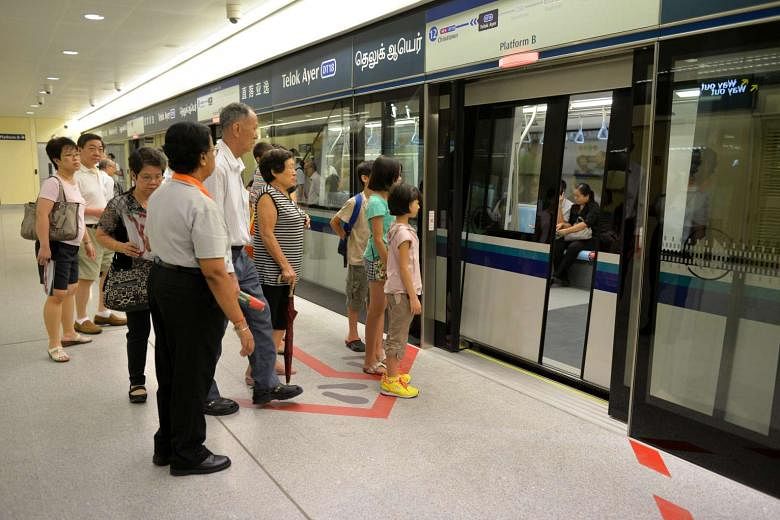The two previous transport ministers - Mr Lui Tuck Yew and his predecessor, Mr Raymond Lim - made a number of profound changes that should pave the way for a more responsive and more sustainable transport system.
And new Transport Minister Khaw Boon Wan has already spelt out his immediate tasks, which include upping the engineering expertise here to tackle the reliability issues faced by the rail network.
Mr Khaw also believes that Singapore should have a lower reliance on cars.
But for this to happen, the country must first be consistent and stay the course when it comes to investing in public transport infrastructure.
This includes keeping to the target of doubling the rail network by 2030, and to not be derailed by financial crises or economic uncertainties along the way.
If Singapore had kept to development plans spelt out 15 to 20 years ago, the rail network would have been far more comprehensive today, and its "car-lite" narrative would be more convincing.
Make no mistake, the Land Transport Authority, as well as all the main contractors and their sub-contractors and suppliers, are all stretched. After all, Singapore is embarking on no fewer than three new rail projects simultaneously. More, if the different stages and extensions of each line, and other improvements, are counted.
In the early days, engineers had to contend with only one - or at the most two - rail projects at any one time. Well, if this is what Singapore must do to play catch-up, so be it. Hopefully, the result will be a transport network that is so convenient and so accessible that having a car is no longer a necessity.
On the fringe, the plan to shift to a new rail financing framework needs more momentum. So far, both SBS Transit and SMRT Corp have not been persuaded to shift the operating contracts of their older lines over to the new framework.
The protracted nature of their discussions with the Transport Ministry suggests that both sides cannot iron out fundamental issues.
It might be good to pause and reflect if Singapore should be making its rail industry contestable - the way it is doing for the bus sector. Although the notion of letting competition motivate operators is appealing, the reality is that the rail business may be too unwieldy for the benefits of this to emerge. The risks associated with such a model are just too high.
It may be better to revisit the proposal to have one rail operator for better economies of scale, and pooling of expertise as well as domain and institutional knowledge.
The best rail systems happen to be those run by a monopoly, duopoly or by the state - think of Hong Kong, Tokyo and Taipei. Although a monopoly goes against popular economic theory, rail may be an exception. To extract the best efficiency out of a sole operator, it should be first delisted, so there are no competing demands from public shareholders.
Then empower regulators to have a stronger hold of that operator, allowing it to take top executives to task in the most direct and severe manner. It is only then that service, reliability and longevity can be improved.
Effective regulation is also needed for the new bus operating model Singapore has just embarked on. Without it, Singapore will end up with service standards that are not commensurate with the bigger bill taxpayers have to foot.
On roads, Singapore needs to optimise efficiency and capacity, given its space constraints. The next-generation Electronic Road Pricing (ERP) system will allow this to be done, if only its full potential can be unleashed to charge according to distance and to bring intelligent, real-time traffic information into each and every vehicle.
Next up: taking a long, hard look at the vehicle quota system. With satellite-tracked, distance-based ERP, the lifespan of certificates of entitlement (COEs) could be tied to mileage rather than years. Doing so might just dilute motorists' drive to maximise usage of their cars once they have paid a king's ransom for them.
On the "car-lite" agenda, should Singapore shelve plans to build another highway? Work on the North-South Expressway, which is supposed to run parallel to the Central Expressway, was slated to start this year. But with the resource crunch, it might be delayed. Why not postpone it indefinitely? After all, building an $8 billion highway and going "car-lite" are conflicting messages.
Also, transport economists will point out that a new highway will be choked in no time because of induced demand.
Lastly, Singapore should really fix the taxi industry. Why is it that Singapore has the highest taxi population per capita and yet commuters complain perennially about the difficulty of getting a cab?
Will allowing transport app companies Uber and GrabTaxi to proliferate do the trick? Or will these newcomers eventually be part of the problem once they are entrenched?
Minister Khaw has already assigned Senior Minister of State for Transport Ng Chee Meng to take a closer look at these new players and see if it is necessary to adjust the playing field so that they compete fairly with taxi firms.
The fact that Mr Khaw did this within a week of assuming the transport portfolio shows that he is hitting the ground running, and that he is paying attention to both big and small issues. As far as commuters go, that must be a promising start.



